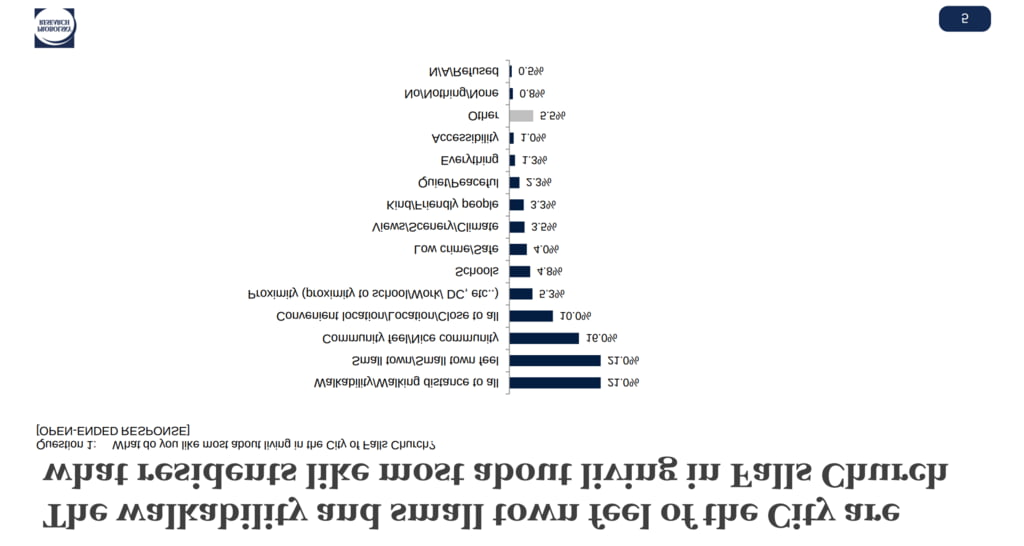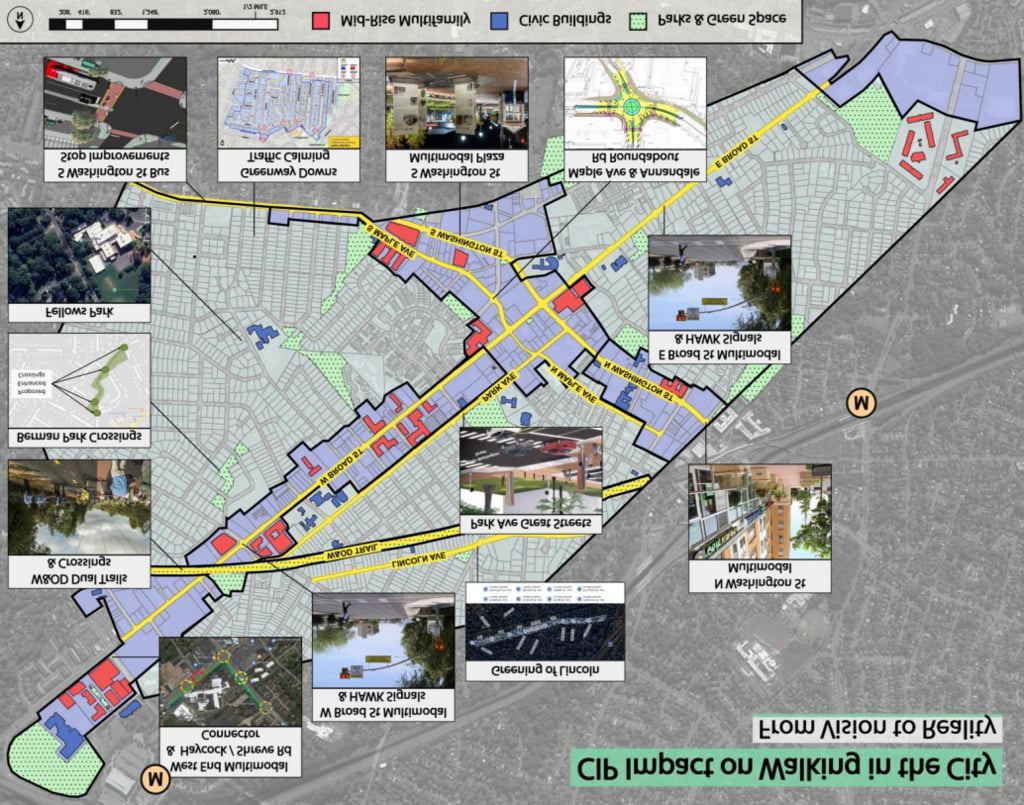Updates from Letty – April 25, 2025
Blog posts are the personal views of Letty Hardi and not official statements or records on behalf of the Falls Church City Council
Dear Friends,
This week’s update is all about the budget. With a little more than two weeks to go and new curve balls to deal with (lower meals and sales tax revenues that I wrote about last week) – we’ve had weekly meetings going til midnight. Our budget process is a community effort. And each year, we work to balance the diverse needs across the city, as you can tell below from the varied topics we cover. If you care about walkability, I encourage you to read on to see the types of projects underway/coming soon and my thoughts. Also – there are already incorrect sound bites out there about our budget deliberations and “cuts” to the school budget so if that has piqued your interest, I encourage you to read on.
After last night’s town hall, there are several more opportunities to tune into our deliberations and share your thoughts before we finalize the budget on May 12 – starting this morning! To close out April’s Fitness Challenge, I’m holding two sets of walking office hours today – at 9 am and 12 pm – meet me at the Broad St entrance of the Howard Herman Trail. And if you can’t make it today, see the bottom of the post for other opportunities. I look forward to hearing from you.
Best,
Letty
What Happened This Week:
(1) Budget Work Sessions
We dove deep into our fire services contract with Arlington, police, transportation projects (the #1 priority we hear from our residents), and next steps on addressing solid waste, aka “how should we pay for trash/recycling/compost” which will be discussed more next Monday. I’ve linked to the various staff reports above should you want to read up and will share some highlights below:
- Fire: We contract with Arlington County for fire services – with a new staffing model, increasing costs of equipment, and a new renegotiated contract (the last one was revised in 2014), our annual costs will be going up. Interestingly, out of 1000 calls for service/year at Station 6, with 50% of them for Falls Church – 70% are for EMS, 20% for fire, and 5% other emergency/rescue requests. (We also get served occasionally by Fairfax County fire department through a regional mutual aid agreement.)
- Police: majority of our discussion was spent on staffing models and the police’s role in helping enforce safer streets and driving behavior. More discussion to come, but due to high program costs and data showing no decrease in violations with the city’s two red light running cameras, the police is proposing we end the red light enforcement cameras at Broad/Cherry and Broad/Virginia – they did their job since implementation 15 years ago and perhaps we can consider other intersections.
- Transportation: we spent a lot of time discussing transportation from big picture and small details about transportation improvements and safety. It’s the largest category of investment in the CIP and gets a lot of attention from City Council because we hear it’s the top priority – why people love living here and also what they want to keep seeing improved (see recent community survey results below with full presentation here)

Letty’s Thoughts:
Our high walkability can be attributed to a few factors:
1/ Compactness (we’re naturally small and at the crossroads of several major intersections)
2/ We now have destinations to walk to (thanks for 20+ years of economic development)
3/ Efforts to make it easier and safer to walk as a viable mode of transportation other than driving
#3 above takes a lot of time and money to evolve from a 1940s car-oriented city to a more walkable community. In the moment, it always feels like there’s more to do and the list never ends – extending this stretch of sidewalk here, adding a crosswalk there, changing this signal over there, slowing down cars everywhere. We don’t spend nearly enough time pausing to acknowledge that re-designing a city and our streets for people takes a lot of time, money, and community effort. I thought the depiction below was a great perspective of the broad and deep investments we’re making in walkability across the city – some of these projects are nearly done, some underway, and some have been in the works for years due to grant schedules, planning, and community engagement timelines.
If we want to keep seeing faster and more improvements in safety and walkability, there also needs to be a few shifts in our thinking and approach. We need to be willing to take a test and learn mentality and be nimble using data to make changes in our streets. Two years ago, we funded the “rapid response team” to more quickly address safety issues vs the 2+ years it takes through the Neighborhood Traffic Calming Program. Our police and our public works teams are meeting regularly to review crash data and discussing changes to improve the streets. (Ideally, we should look at near miss data too – because if we have crashes and injuries, we’re too late!) We also need to be bolder and take a more tops down approach where there are safety issues. Bottoms up and listening to the community is important, but the process is resource intensive, slower, and often will water down the end solution such that we aren’t accomplishing the original safety or walkability goal. “Give people a voice and not a veto.”
(2) Budget Curve Balls
The annual budget process is one of the most important responsibilities of the City Council every year. Our role in the budget is to care for the entire city, be responsive to community’s priorities, and be good stewards of taxpayer dollars – especially being mindful of the regional economic picture which is obviously in flux.
Some context sharing that is important as you read the headlines and hear the sound bites:
1/ Budgets are growing – not cutting. Tax bills are still going up. We have comparatively strong local revenues. At the beginning of budget cycle, because property values have risen 8-15% because we’ve been a desirable place to live and do business, with half of the value due to new commercial growth – City Council wanted to keep the overall tax bill change to an increase of $400 for the median homeowner, about inflation – a 3.5% increase over last year.
To accomplish that, the city manager proposed a 2.5 cent property tax rate decrease. General government and school budgets would still grow 6.5% and 7% over last year’s budgets which covers the projected 6% growth in students and other needs of a growing city. (As context, a “normal” budget grows 3%. And a 6% budget is actually 2-3x what our neighbors’ budgets are growing by, so we are in much better shape.)
2/ Curve ball – with new data from Q3 that we saw two weeks ago, there are worrisome signs that local tax revenues like meals and sales are coming in lower than we’d like even with new businesses opening. Those are the early indicators of consumer sentiment. So much that our CFO is revising down our revenue projections by $1.2M from where we thought we’d be in December. Obviously April 2025 is very different than December 2024 when we kicked off the budget process and issued our guidance.
3/ Federal impacts – we started off our first budget work session with a regional perspective on the job impact of federal cuts in budgets and layoffs. We know that 16% of our residents in Falls Church are federal workers, and that does not include contractors or fed adjacent jobs that may also at risk. Or the second order effects of those job losses. People generally cut back on discretionary spending like shopping and eating out. So we are very mindful of that trend, looking at data as soon as it comes out, impact of tariffs on planned capital projects, what bigger bills mean for your household budgets and the city budget.
Letty’s Thoughts
What’s next – with our first reading vote last week, we did vote to keep the tax rate flat and not the 2.5 cent decrease *as the ceiling* to give ourselves room as we continue to listen and deliberate on how to balance multiple priorities. Several on City Council have expressed the desire to look for ways to still lower the tax rate so that we can moderate the tax bill impact, including myself. Again even with a 2.5 cent cut, the median bill is going up $400 and we’re cognizant that may not be easy for everyone.
We have valued our partnership with the schools in being able to build a once in a generation new high school and a long standing revenue sharing agreement that splits tax revenue 50/50, and in good times and in bad. No one likes to revise revenue forecasts down – especially mid cycle – we know that multiple departments have been working on budgets the past several months and that is disruptive. But that may be the norm as the road ahead will probably be bumpy and we may need to react quickly as we get new data. I am still confident that we’re better positioned in the region, but we’re not immune and we’re small so impacts will feel bigger.
Our job is to balance all the other priorities we’re hearing from the community. I hope we can have productive look at realistic options on both the revenue and expense side, because frankly – those are levers we might need again later this budget year and most definitely next year. Out of a $130M budget, we should look at what sustainable budgets are – especially if we’re bracing ourselves for a recession in the region with flat or declining revenues vs jump to the scariest options that tug hardest at the heartstrings.
What’s Coming Up:
Monday, April 28 – City Council Meeting*
Monday, May 5 – City Council Work Session*
Wednesday, May 7 – Ask the Council Office Hours (9 am, City Hall)
Monday, May 12 – City Council Meeting* (final budget adoption)
*Mondays (except 5th Mondays and holidays) at 7:30 pm. You can access the agenda and livestream here, including recordings of past meetings
Letty’s Office Hours:
Friday, April 25 – 9 am AND 12 pm (Walking Office Hours – meet at Broad St entrance of Howard Herman Trail)
Wednesday, May 21 – 5 pm (Walking Office Hours – meet at Cherry Hill Park)